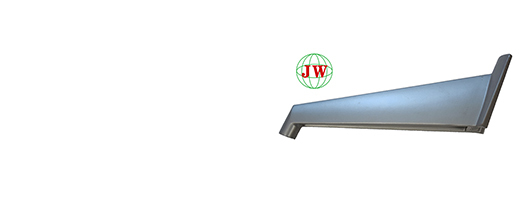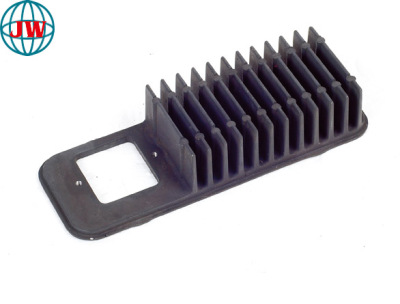
Die-Cast Lighting: Technological Innovation Illuminates the New Era of Green Lighting
2025-07-14 15:00
Against the backdrop of global advocacy for low-carbon environmental protection and intelligent manufacturing, die-cast lightingis emerging as a new focus in the lighting industry, thanks to its exquisite craftsmanship, durability, and design flexibility. From garden landscape lights to high-end commercial chandeliers, the in-depth application of die-casting technology has not only reshaped the appearance of lighting fixtures but also driven the entire industry towards efficiency, energy conservation, and sustainability.
Precision Die-Casting Process: Shaping the Structural Aesthetics of Lighting
The core advantage of die-casting technology lies in its ability to form complex, high-precision lighting components from metal materials through high-pressure casting. This characteristic provides designers with unlimited creative space. Traditional lighting fixtures mostly rely on welding or assembly processes, where gaps are prone to appear at component joints, affecting waterproofness and aesthetics. In contrast, the integrated die-casting processcan integrate the lamp body, bracket, and heat dissipation structure into a single casting, achieving a "seamless" design.
For example, a well-known lighting brand launched die-cast aluminum garden lights with lamp bodies formed in one go using ADC12 aluminum alloy. The surface undergoes sandblasting + anodizing treatment, not only presenting a delicate metallic texture but also resisting erosion from rainwater and ultraviolet rays. Their service life is more than three times that of traditional iron lamps. In the commercial lighting sector, geometric-shaped chandeliers crafted through die-casting are highly favored. By customizing molds, polyhedral lamp frames can be mass-produced with precise control over the angle and curvature of each face, ensuring uniform and harmonious light refraction effects, thus creating a unique light and shadow atmosphere in shopping malls, hotels, and other spaces.
Material Upgrades: Balancing Performance and Environmental Needs
Material innovation is key to breaking through the performance bottlenecks of die-cast lighting. Currently, aluminum alloys remain the mainstream choice due to their excellent lightweight and thermal conductivity, making them particularly suitable for LED lighting that requires heat dissipation. For instance, LED street lamp housings die-cast from 6063 aluminum alloy have a thermal conductivity of 180W/(m·K), which can quickly dissipate heat from lamp beads, extending the LED light source’s lifespan to over 50,000 hours.
Meanwhile, magnesium alloy die-cast lighting is gaining momentum. Magnesium alloys are 30% lighter than aluminum alloys and offer better shock absorption, making them ideal for portable outdoor camping lights. An outdoor product company launched magnesium alloy die-cast camping lights weighing only 200 grams, capable of withstanding -30℃ low temperatures and 1-meter drop impacts. Their surfaces use chromium-free passivation treatment, meeting the EU RoHS environmental standards and becoming a bestseller on cross-border e-commerce platforms.
For the high-end market, zinc alloy die-casting is mostly used for decorative components. Zinc alloys have good fluidity and can be die-cast into 0.5mm fine patterns, such as carved lamp bases for European-style chandeliers and hollowed-out decorations for retro wall lamps. After antique copper electroplating, they perfectly replicate the artistic texture of classical lighting, with costs only 1/3 of pure copper casting.
Intelligent Production: Enhancing Quality and Efficiency
With the penetration of intelligent manufacturing, die-cast lighting production is shifting from "experience-driven" to "data-driven". Leading enterprises have introduced digital die-casting workshops, connecting die-casting machines, mold temperature control systems, and quality inspection equipment through IoT technology. They real-time monitor over 120 parameters such as injection speed, mold temperature, and alloy composition, increasing product qualification rates from 85% to over 99%.
Digital mold design is another core for improving quality and efficiency. Using 3D modeling and simulation technology, engineers can predict potential issues like shrinkage holes and deformation in castings before production, and optimize the mold’s runner layout and cooling system in advance. For example, when designing a mold for a special-shaped landscape lamp, an enterprise discovered through simulation that cold shuts were prone to occur at the lamp body edges. It immediately adjusted the mold temperature curve and injection pressure, ultimately achieving a 100% qualification rate in the first trial production and saving 30% of mold testing costs.
Green Transformation: Full-Cycle Environmental Protection from Production to Recycling
Driven by the "dual carbon" goals, environmental friendliness has become a key competitive indicator for die-cast lighting. On the production side, enterprises are increasingly using recycled aluminum alloys as raw materials. These materials are formed by remelting recycled waste aluminum, reducing carbon emissions by over 90% compared to primary aluminum. A lighting brand’s "Circular Series" garden lights feature lamp bodies 100% die-cast from recycled aluminum, with surface coatings using water-based environmental powder. Cured through electrostatic spraying, they emit no VOCs and have obtained EU ECOCERT certification.
On the recycling side, the all-metal structure of die-cast lighting makes its recycling rate far higher than that of plastic or glass lighting. Industry data shows that the material recycling rate of aluminum alloy die-cast lighting can reach 95%. During recycling, it only needs simple smelting to be reused in production, forming a closed-loop system of "raw materials - products - recycling - regeneration". This sustainability not only aligns with global green consumption trends but also reduces raw material costs for enterprises.
Market Trends: Customization and Functional Integration as New Growth Drivers
With consumption upgrading, demand for customized die-cast lighting is surging. Scenarios such as hotels and commercial complexes prefer to cooperate with manufacturers to customize exclusive lighting styles according to space characteristics. In a high-end hotel project, a die-casting enterprise designed a 5-meter-diameter giant chandelier for its lobby. Through block die-casting and splicing, it achieved an artistic effect of "starlight pouring down". The metal castings’ surfaces, treated with wire drawing + anodizing, present a delicate texture comparable to artworks.
Functional integration is also a significant trend. The structural stability of die-casting allows lighting to easily integrate additional functions such as sensors and wireless charging modules. For example, a new die-cast smart desk lamp has a built-in light sensor that automatically adjusts light intensity according to ambient brightness. Its base fixes the wireless charging coil through precision die-cast threaded holes, achieving "lighting + charging" integration, which is highly popular among young consumers.
From precision components to artistic lighting, die-casting technology is reshaping the boundaries of the lighting industry with its unique advantages. In the future, with the deep integration of 5G IoT and AI design, die-cast lighting will further realize intelligent experiences of "adjustable light efficiency, controllable energy consumption, and scenario adaptation", writing a more brilliant chapter for the era of green lighting.
Get the latest price? We'll respond as soon as possible(within 12 hours)












